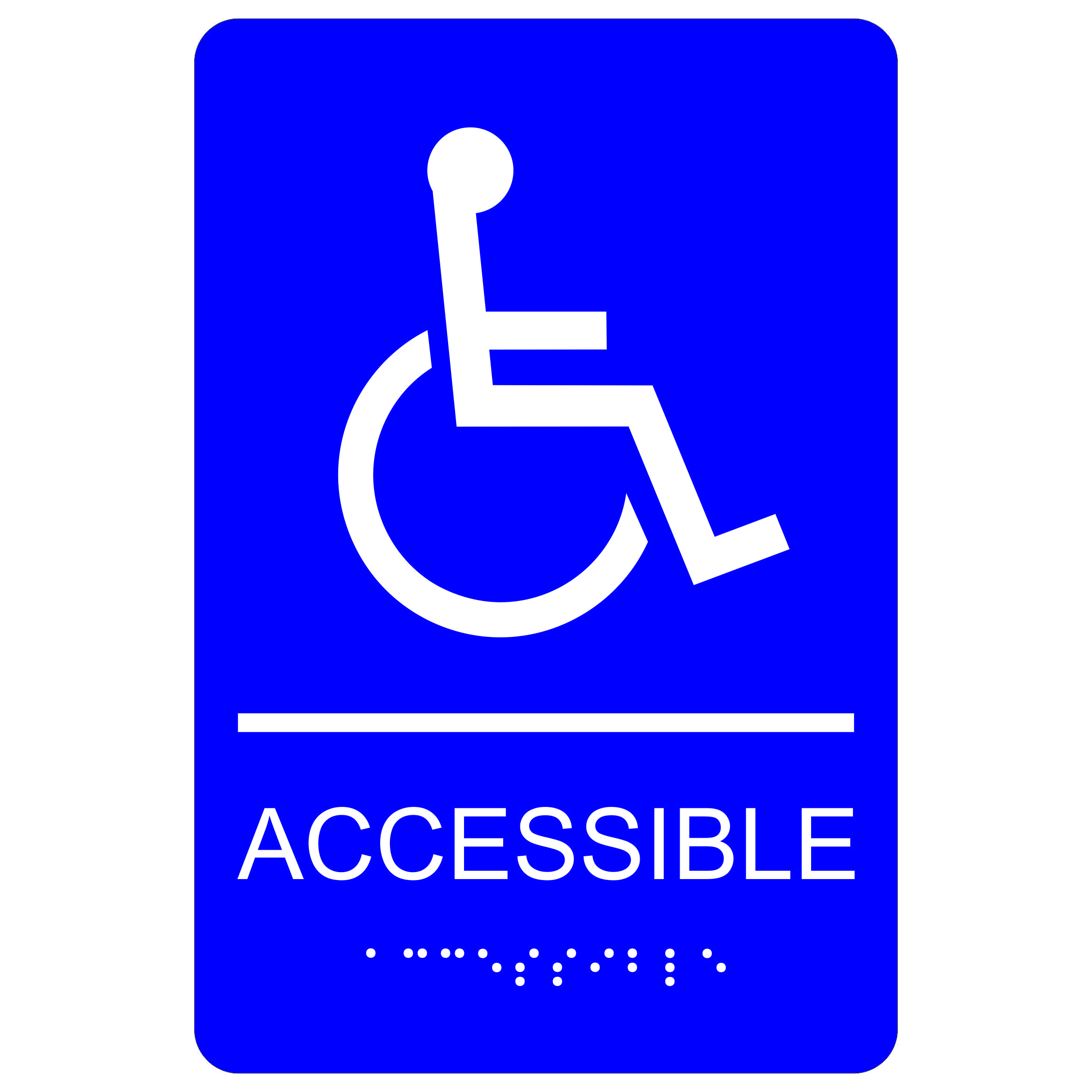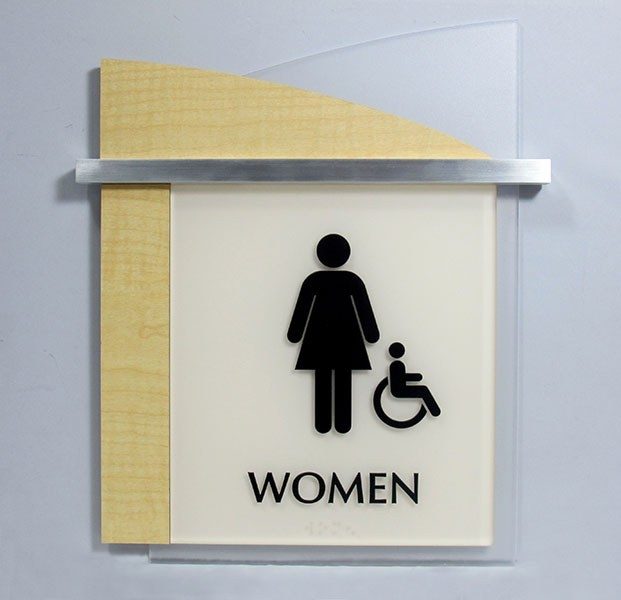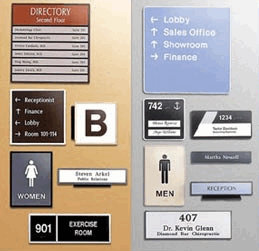The Impact of ADA Signs on Community Accessibility
The Impact of ADA Signs on Community Accessibility
Blog Article
Exploring the Key Functions of ADA Indicators for Improved Accessibility
In the world of ease of access, ADA indicators offer as quiet yet powerful allies, ensuring that areas are navigable and inclusive for people with specials needs. By incorporating Braille and tactile components, these indicators break obstacles for the visually impaired, while high-contrast color schemes and understandable font styles provide to diverse visual needs.
Relevance of ADA Conformity
Making certain compliance with the Americans with Disabilities Act (ADA) is vital for cultivating inclusivity and equivalent access in public areas and workplaces. The ADA, established in 1990, mandates that all public centers, companies, and transportation solutions fit people with handicaps, ensuring they enjoy the exact same rights and opportunities as others. Compliance with ADA standards not only satisfies lawful responsibilities however also improves an organization's reputation by showing its commitment to variety and inclusivity.
Among the key aspects of ADA conformity is the implementation of obtainable signage. ADA signs are designed to guarantee that individuals with disabilities can quickly navigate via rooms and structures. These indicators have to abide by details standards pertaining to dimension, font style, color contrast, and positioning to assure presence and readability for all. Effectively applied ADA signs helps eliminate obstacles that individuals with specials needs usually experience, consequently promoting their independence and self-confidence (ADA Signs).
Furthermore, adhering to ADA guidelines can reduce the risk of prospective penalties and legal effects. Organizations that stop working to follow ADA standards may face penalties or legal actions, which can be both destructive and economically challenging to their public picture. Hence, ADA compliance is indispensable to fostering a fair environment for everybody.
Braille and Tactile Components
The incorporation of Braille and responsive elements right into ADA signs personifies the principles of availability and inclusivity. It is typically placed underneath the matching text on signage to guarantee that people can access the details without aesthetic assistance.
Responsive components expand past Braille and consist of increased symbols and personalities. These parts are created to be noticeable by touch, enabling people to recognize space numbers, bathrooms, departures, and other crucial locations. The ADA sets specific standards relating to the size, spacing, and placement of these responsive aspects to optimize readability and ensure uniformity throughout various atmospheres.

High-Contrast Color Systems
High-contrast color systems play an essential role in enhancing the visibility and readability of ADA signs for people with aesthetic impairments. These systems are essential as they optimize the distinction in light reflectance between message and history, making sure that signs are quickly noticeable, even from a distance. The Americans with Disabilities Act (ADA) mandates making use of particular color contrasts to suit those with minimal vision, making it a vital aspect of conformity.
The efficacy of high-contrast colors depends on their capability to stick out in various illumination problems, including dimly lit atmospheres and areas with glare. Commonly, dark text on a light background or light message on a dark history is employed to internet achieve ideal comparison. Black message on a yellow or white history offers a raw visual difference that helps in quick acknowledgment and comprehension.

Legible Fonts and Text Size
When taking into consideration the layout of ADA signs, the option of clear fonts and ideal message dimension can not be overstated. The Americans with Disabilities Act (ADA) mandates that fonts must be not italic and sans-serif, oblique, manuscript, very attractive, or of uncommon form.
The size of the message also plays a critical role in accessibility. According to ADA standards, the minimum message height ought to be 5/8 inch, and it should raise proportionally with checking out distance. This is specifically important in public spaces where signage demands to be checked out rapidly and properly. Consistency in message size adds to a natural visual experience, helping individuals in browsing environments successfully.
Additionally, spacing in between lines and letters is essential to legibility. Appropriate spacing prevents characters from appearing crowded, boosting readability. By adhering to these requirements, designers can substantially enhance ease of access, making certain that signs offers its desired objective for all individuals, no matter their aesthetic capabilities.
Efficient Placement Approaches
Strategic placement of ADA signs is essential for making best use of ease of access and making certain compliance with legal criteria. Properly positioned indications assist individuals with impairments successfully, facilitating navigation in public spaces. Secret factors to consider include presence, closeness, and elevation. ADA guidelines stipulate that indications ought to be installed at a height between 48 to 60 inches from the ground to ensure they are within the line of view for both standing and seated people. This standard elevation array is critical for inclusivity, enabling mobility device individuals and people of differing elevations to accessibility info easily.
Additionally, indicators should be placed nearby to the latch side of doors to permit simple recognition before access. Consistency in sign positioning have a peek here throughout a facility boosts predictability, reducing complication and improving general individual experience.

Final Thought
ADA indicators play an essential duty in advertising ease of access by incorporating functions that deal with the requirements of individuals with disabilities. These elements jointly foster a comprehensive setting, emphasizing the value of ADA compliance in guaranteeing equivalent accessibility for all.
In the world of ease of access, ADA signs offer as quiet yet powerful allies, making sure that rooms are navigable and inclusive for individuals with disabilities. The ADA, established in 1990, mandates that all public facilities, companies, and transport services suit people with handicaps, ensuring they delight in the very same civil liberties and chances as others. ADA Signs. ADA signs are made to make sure that individuals with disabilities can conveniently browse with spaces and structures. ADA guidelines stipulate that indicators must be mounted at an elevation between 48 to 60 inches from the ground to guarantee they are within the line of sight for both standing and seated people.ADA indications play a vital duty in promoting access by integrating functions that attend to the needs of people with disabilities
Report this page